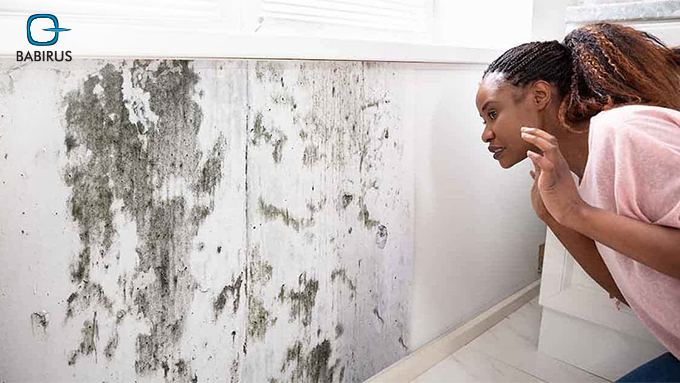Mold Allergy: Symptoms, Causes, and Accurate Testing

If you’ve ever experienced unexplained coughing, wheezing, nasal congestion, or itchy eyes, especially in damp or humid environments, you may be reacting to more than just seasonal allergens. For many, the true culprits lie in invisible spores and microscopic fungi floating in the air. Mold allergies, often underdiagnosed, are responsible for a significant portion of chronic respiratory issues.
These allergies aren’t caused by mold itself, but by the proteins produced by certain fungi. These proteins can be inhaled, triggering immune responses in sensitive individuals. In humid climates or poorly ventilated spaces, these allergens become even more problematic. This blog unpacks the biology of mold allergies, how fungal species like Malassezia are involved, and why molecular allergy testing like ALEX2 is changing how we identify and treat these hidden triggers.
What Is a Mold Allergy?
A mold allergy is an overreaction of the immune system to fungal spores or components. When a person with mold sensitivity inhales spores, their immune system mistakenly identifies them as threats and produces antibodies (IgE) against them. This triggers the release of histamine and other chemicals, resulting in allergic symptoms.
Unlike pollen allergies, which are seasonal, mold allergies can be year-round. Mold spores thrive in damp, warm environments and can be found in both indoor and outdoor settings. Even seemingly clean homes may harbor hidden mold colonies behind walls, under carpets, or inside air conditioning units.
Common Mold and Fungal Allergens
Each mold or fungus species produces unique allergenic proteins. These fungal allergens vary in how they affect the body and where they are found. Let’s take a look at the most important ones:
- Alternaria alternata: Common in outdoor air, especially in dry or warm regions. Known to trigger asthma attacks.
- Aspergillus fumigatus: Found in decaying leaves and compost. Can lead to allergic bronchopulmonary aspergillosis (ABPA).
- Cladosporium herbarum: Found on plant surfaces, carpets, and textiles.
- Penicillium chrysogenum: Found indoors, especially in water-damaged buildings.
- Malassezia species: Naturally found on human and animal skin. Associated with dandruff, seborrheic dermatitis, and can trigger respiratory symptoms.
Each species contains specific allergens. For instance:
- Alt a 1 from Alternaria
- Asp f 1, Asp f 6 from Aspergillus
- Cla h 8 from Cladosporium
- Mal f 1, Mal f 6 from Malassezia
These proteins can become airborne and linger, especially in high-humidity regions like the UAE or during the monsoon season.
How Mold Exposure Happens
Mold spores are microscopic, light, and easily dispersed through the air. Once airborne, they can be inhaled or settle on surfaces, where they continue to release allergens. Here are some environmental factors that significantly increase mold growth and allergen levels:
- Humidity above 60%: Promotes spore release and fungal colonization
- Poor ventilation: Especially in bathrooms, kitchens, and basements
- Flooding or water leaks: Ideal breeding ground for mold
- Damp textiles or carpets: Retain moisture and spores
- Indoor plants: Soil can harbor fungi like Aspergillus
Even brief exposure can trigger respiratory allergy symptoms, especially in sensitized individuals. This includes coughing, wheezing, sinus pressure, and nasal congestion.
Symptoms of Mold and Fungal Allergies
The symptoms of a mold allergy range from mild nasal irritation to more severe respiratory issues. Common signs include:
- Persistent sneezing
- Runny or stuffy nose
- Post-nasal drip
- Itchy, watery eyes
- Coughing or wheezing
- Shortness of breath
- Sinus headaches
- Skin rashes or flares (especially in malassezia allergy)
People with asthma may notice that mold exposure worsens their condition. In children, mold sensitivity is linked to increased risk of developing allergic rhinitis and asthma.
Why Mold Allergies Are Often Missed
Traditional allergy testing often uses crude mold extracts that group several proteins together. These extracts can cause:
- Cross-reactivity: Your immune system reacts to a similar protein in a different species.
- Inconsistent accuracy: Not all mold extracts are standardized.
- Limited insights: Whole-extract testing can’t differentiate between specific fungal proteins.
This means you could test positive for a mold allergy but still not know which mold is responsible, or worse, test negative despite symptoms. That’s where component-resolved diagnostics come in.
Molecular Allergy Testing: A More Accurate Tool
Component-resolved diagnostics (CRD) like the ALEX2 Allergy Xplorer go beyond general IgE responses. Instead of broad extracts, they test for individual allergenic molecules such as:
- Alt a 1 from Alternaria
- Asp f 1, Asp f 3, and Asp f 6 from Aspergillus
- Mal f 2 from Malassezia
This level of detail helps allergists:
- Identify specific allergens like Alt a 1, Asp f 6, Mal f 1
- Differentiate between cross-reactive and clinically relevant allergens
- Improve treatment planning, especially for immunotherapy
- Enable targeted environmental control and avoidance strategies
For example, a patient with IgE sensitivity to Mal f 1 might not benefit from standard mold avoidance advice but would need skincare and air quality interventions.
Managing Mold and Fungal Allergies
Once a mold allergy is confirmed, effective management depends on reducing exposure and treating symptoms. Here’s how:
Environmental Control:
- Use dehumidifiers to maintain indoor humidity below 50%
- Ventilate bathrooms and kitchens
- Replace moldy carpets or drywall
- Clean air ducts and filters regularly
- Use HEPA air purifiers
Medical Treatment:
- Antihistamines for sneezing and nasal itching
- Nasal corticosteroids to reduce inflammation
- Leukotriene receptor antagonists
- Immunotherapy (allergy shots) for specific allergens
Lifestyle Adjustments:
- Use antifungal shampoos if Malassezia is involved
- Avoid damp gym gear or sweaty clothing
- Clean air ducts and AC units frequently
When Should You Get Tested?
You should consider advanced mold allergy testing if:
- You experience chronic respiratory symptoms with no clear cause
- Symptoms worsen during rainy seasons or in humid spaces
- Skin symptoms accompany respiratory issues
- You’ve had inconsistent results with past allergy tests
- You live in a region where humidity is high year-round
An allergy specialist can interpret your test results, identify hidden triggers, and create a treatment plan tailored to your sensitivities.
FAQs About Mold and Fungal Allergies
Curious about what mold and fungal allergies really mean for your health? These frequently asked questions can help clarify the most important points:
- Can mold allergies be dangerous?
Yes. For people with asthma or weakened lungs, mold exposure can trigger serious respiratory events or chronic inflammation. - Can mold allergies cause eczema or skin reactions?
Yes. Some fungal species, especially Malassezia, can trigger skin inflammation, especially in the scalp, neck, and face. - What is Malassezia allergy?
Malassezia is a yeast that naturally lives on the skin. In sensitive individuals, it can provoke rashes, itching, and seborrheic dermatitis. - Can mold allergies worsen asthma?
Absolutely. Mold spores can irritate the airways, leading to asthma attacks or worsening control in asthmatic patients. - How is molecular testing different from skin prick tests?
Molecular tests target individual allergenic proteins, offering greater specificity and reducing false positives. - Can mold allergies be cured?
While there is no permanent cure, symptoms can be significantly reduced with avoidance, medication, and immunotherapy. - Can I be allergic to one mold and not others?
Yes. Each mold has different proteins. You may be sensitive to Alternariabut not Cladosporium. - Can mold allergies cause fatigue or brain fog?
Yes. Ongoing exposure to allergens can cause systemic inflammation, which may lead to brain fog or fatigue in sensitive individuals.
Lastly,
Mold and fungal allergies are often underestimated in their impact on daily health. These microscopic triggers can silently contribute to chronic respiratory issues, skin conditions, and fatigue, especially in humid or poorly ventilated environments.
Traditional testing methods may miss the specific culprits, leaving patients frustrated and untreated. Molecular allergy testing provides a clearer picture, identifying the exact proteins causing symptoms and enabling more targeted intervention. Whether you’re struggling with year-round allergies, recurrent sinus infections, or unexplained respiratory issues, understanding your body’s reaction to fungal allergens is a crucial first step.
If conventional approaches haven’t worked, it may be time to consider molecular diagnostics. With clearer answers, comes more effective care and relief.

